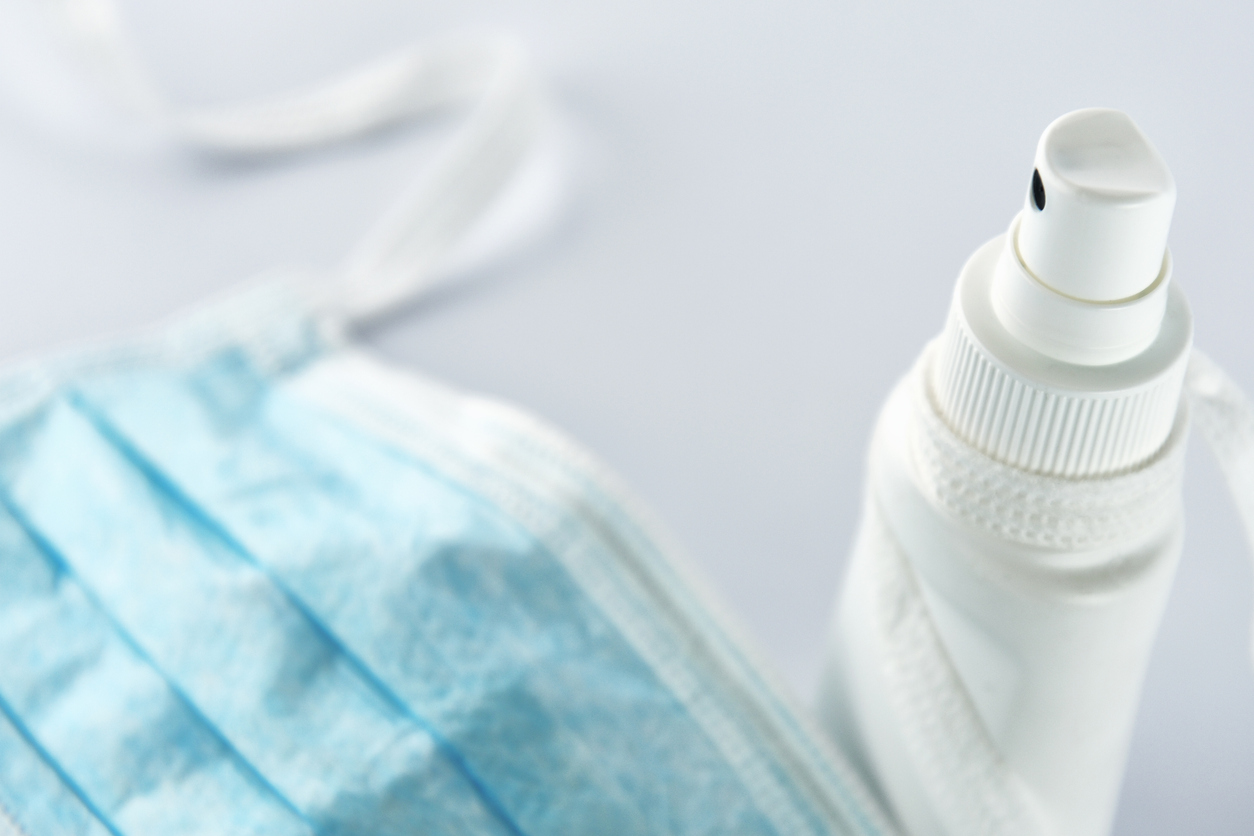
The general principles of infection control include universal precautions, also sometimes referred to as standard precautions. These principles are based on assessed risk, and make use of common-sense practice and personal protective equipment (PPE). Standard precautions are used in all patient care settings and in healthcare educational settings. The purpose of universal precautions is to prevent the spread of infection to students, staff, and healthcare professionals (HCPs), as well as prevent the spread of infection among a patient population.1
Hand hygiene
The foundation of infection control is hand hygiene. Washing hands is the single most important thing anyone can do to prevent the spread of germs, bacteria, and viruses.
Whether through the use of soap and water, or by using an alcohol-based hand rub (ABHR), also called hand sanitizer, hand hygiene should be practiced in classrooms, healthcare settings, restaurants, and retail businesses. Hands should be cleaned thoroughly in six key areas: fingernails (around and under); between fingers; palms of hands; backs of hands; each finger; and wrists.

Soap and water should be used when hands are visibly soiled or contaminated with bodily fluids, and in the following situations:
- After caring for patients with C. diff infection
- After using the restroom
- Before eating
In other healthcare situations, an alcohol-based hand rub (ABHR) can be used. Well-formulated hand sanitizing products that use alcohol as their base (rather than an antimicrobial such as triclosan) often contain conditioners and emollients that have skin-care benefits.2
Using personal protective equipment (PPE)
Personal protective equipment (PPE) includes disposable gloves, face masks, gowns, and goggles and visors, as well as shoe covers and caps where indicated. While the primary purpose of PPE is to protect users from cross infection, it is also used when handling hazardous chemicals and some types of pharmaceuticals.3 PPE should be used whenever there is a chance of possible exposure to infectious materials, including airborne particles.
When PPE is included with products such as CPR masks or any types of diagnostic tool, be sure to use it according to manufacturer’s directions. Otherwise, be sure to defer to your institution’s protocol for appropriate use of PPE.
Safe handling and disposal of sharps
Sharps include scalpels, needles, glass ampules, and any type of sharp instrument used in health care. According to the Centers for Disease Control and Prevention (CDC), approximately 385,000 needlestick and sharps-related injuries occur to hospital based HCWs annually. That number doesn’t include the other sharps-related injuries that occur in other clinical and healthcare settings.
Although sharps injuries are associated with the transmission of Hepatitis B, hepatitis C, and human immunodeficiency viruses (HBV, HCV, and HIV, respectively), sharps injuries have been implicated in the transmission of 20 other pathogens.4
To reduce the risk of injury and exposure to bloodborne viruses, it is vital that sharps are used safely and disposed of carefully. Instructors and employers should provide targeted education and awareness training for all health care workers. A plan for safely using and disposing of sharps is vital to the health of HCW, and teaching safe disposal should be an integral part of healthcare education, especially nursing.
Cleaning and disinfecting of equipment
During a localized epidemic, the use of disposable diagnostic tools can be encouraged, even required. One-time use of equipment clearly prevents cross infection. In general, options and availability have expanded in this area in order to make the use of disposables more affordable.
However, in an on-going pandemic, disposable diagnostic tools may not be cost effective for organizations. One way companies can address this need is by developing non-contact resusables, such as no-contact thermometers, or making them easier to clean, such as a one-piece blood pressure cuff. Another option for preventing infection is thorough cleaning and disinfecting of tools, patient rooms, and other environments and equipment used in patient care.
- Cleaning and disinfecting are two distinct steps in the process for ensuring infection control. Cleaning is the process by which dirt, germs, and impurities are removed from a surface. Cleaning doesn’t kill germs – simply removes them from a surface, making it less likely that they will spread through contact with that surface. While cleaning can reduce infection risk, disinfecting tools and surfaces after cleaning is a vital step.
- Disinfecting is the use of chemical agents to kill bacteria, viruses, and other germs on surfaces. In the United States, disinfecting agents approved by the Environmental Protection Agency (EPA) to effectively kill germs are registered by the agency and on List N for easy reference.
- Sterilization usually incorporates heat to further disinfect tools and devices. This final step ensures an object is free from microorganisms, including bacterial spores.
- Decontamination, which encompasses cleaning, disinfecting, and sterilization, ensures a re-usable medical device is safe to use again.
Users should always read the instructions for use (IFU) that come with any device, medical product, or educational tool. This is important not just to inform people how to achieve the right level of cleanliness for individual products, but also to ensure they don’t damage equipment by using the wrong type of solutions or processes. Most healthcare equipment companies make these IFUs available on their web sites so people can access the information even if they’ve lost the original documents.
- “Standard Precautions for All Patient Care,” CDC Infection Control. Source https://www.cdc.gov/infectioncontrol/basics/standard-precautions.html
- Mangine, D., “Handwashing in the age of coronavirus,” https://blog.simtalkblog.com/blog/handwashing-in-the-age-of-coronavirus, SimTalk™ Blog, March 5, 2020
- “Good practice in infection prevention and control: Guidance for nursing staff,” Royal College of Nursing http://www.wales.nhs.uk/sites3/documents/739/rcn%20infection%20control.doc.pdf
- “Sharps Safety for Healthcare Settings,” CDC Centers for Disease Control and Prevention, National Center for Emerging and Zoonotic Infectious Diseases (NCEZID), Division of Healthcare Quality Promotion (DHQP), Feb. 2015.







